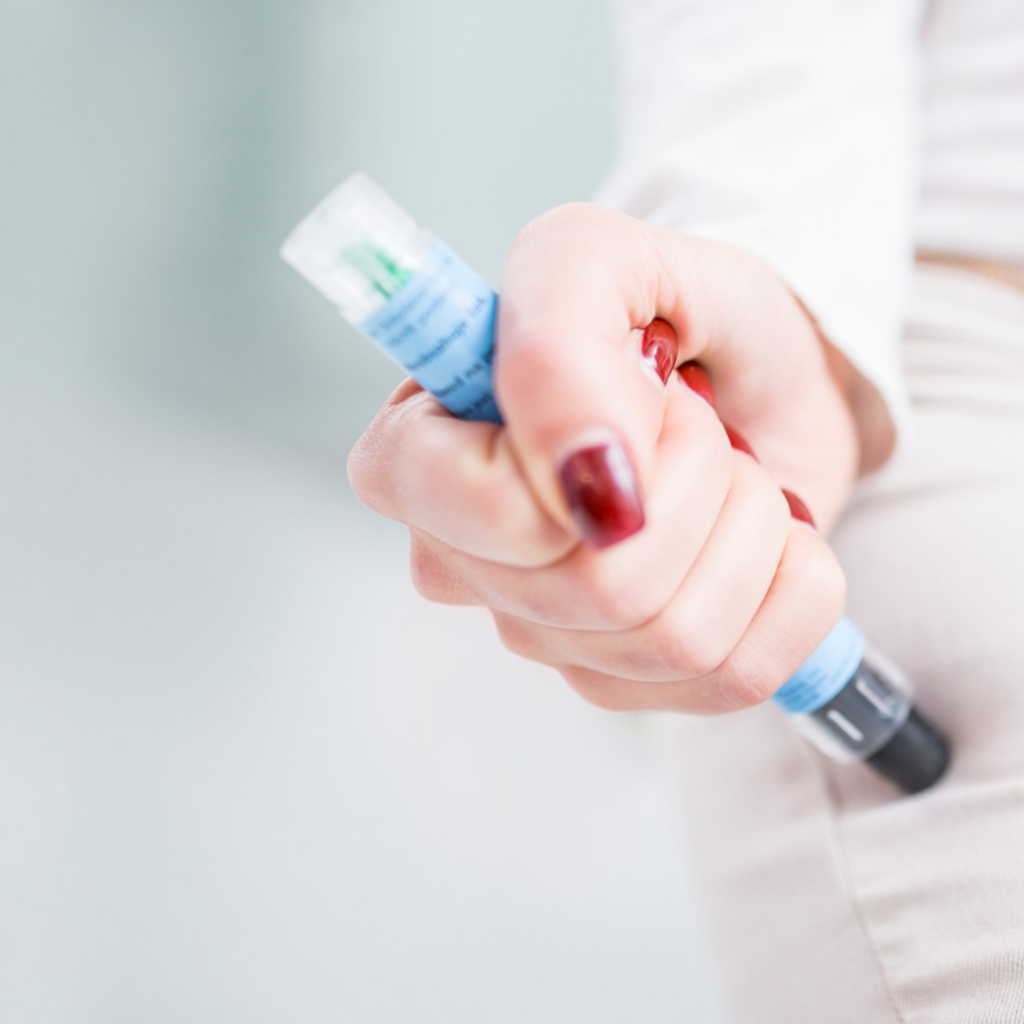
Anaphylaxis is a terrifying thing to experience and to witness, especially if you do not understand fully what it is and what to do if someone is in the middle of an episode. Most first reactions to knowing that someone is having an anaphylaxis reaction is to do what one would do with most allergic reactions and give the person an antihistamine. That can be precisely the incorrect thing to do, because a person who is entering anaphylactic shock often loses the ability to speak if they are conscious at all. Those who arrive to administer care to the person need to be able to rely on the person’s body to tell them what is wrong and how to best quickly stabilize the person. If the person has been given an antihistamine, those crucial signs can be hidden or lessened, making it take even longer for proper treatment to be given.
So, what is the correct course of action to take if you think someone is experiencing anaphylaxis? The first thing you should do is make sure the person is lying somewhere comfortable and that anything that could cause them to be in harm’s way is removed from their immediate environment. It is not uncommon for someone who enters an anaphylactic shock to pass out or to have a seizure. The next step to take is to look for a medical alert bracelet or necklace. While doing this, make sure someone is calling emergency services, so he or she can relay any information while bringing help rapidly. Medical alert jewelry can tell you what the person might be having a reaction to and can help emergency workers decide the best course of action quickly.
Many people who have had anaphylaxis in the past carry self-distributing medical pens called EpiPens. If one is available, follow the correct procedure for using it. Remove any clothing that is covering the outer thigh of the victim. Never inject an EpiPen anywhere other than the thigh. Accidental injection straight into a vein can cause death. Once the thigh is clear of clothing, hold the pen in your fist directly in the middle of the pen. Holding the pen in the middle ensures you will not accidentally trigger the pen. Once the device is triggered there is no way to use it again. Holding the pen in the described manner, remove the activation cap, which will be blue. With the activation cap removed, press the orange tip of the pen against the skin until you hear a click, which signals the needle has entered the skin. Keep the pen compressed against the skin, with a firm weight for about a minute, to ensure the medication is fully released. The pen itself is self-containing as far as the needle goes, so there is no worry that once the medication is spent the needle will be exposed.

An EpiPen is a short expression for an epinephrine pen, which is an adrenaline shot. It is the best-known way to fight anaphylactic shock, and it is the quickest route to stabilizing someone experiencing anaphylaxis. If a person does not have an EpiPen, they will be given an epinephrine shot as soon as those aiding them is able.
How can you be sure that someone is experiencing anaphylaxis? The first signs are usually mild. They can include rashes, itchy and watery eyes or a runny nose. Within a half hour, however, these symptoms can develop into something far more serious and life-threatening and other symptoms can start to manifest themselves. Coughing or difficulty breathing is a common sign associated with this reaction. Sufferers have described it as a feeling of someone sitting on their chest. Fainting and dizziness are very likely, and both can lead to the person being confused and not understanding what is happening around them. It usually renders the victim unable to speak or answer questions. Rashes, swelling of skin and hives are all common symptoms as well. A person experiencing anaphylaxis will often end up vomiting and can lose control of their bodily functions. Another thing to check for is a weak pulse and the person becoming pale.

The most important thing to remember is seeking help speedily. The faster the person who is being affected has help, the more likely they are to survive and recover quickly. Anaphylaxis is a severe allergic reaction. It can take only moments to place a person’s life in serious jeopardy. By getting help quickly you are giving that person the best fighting chance you can.


